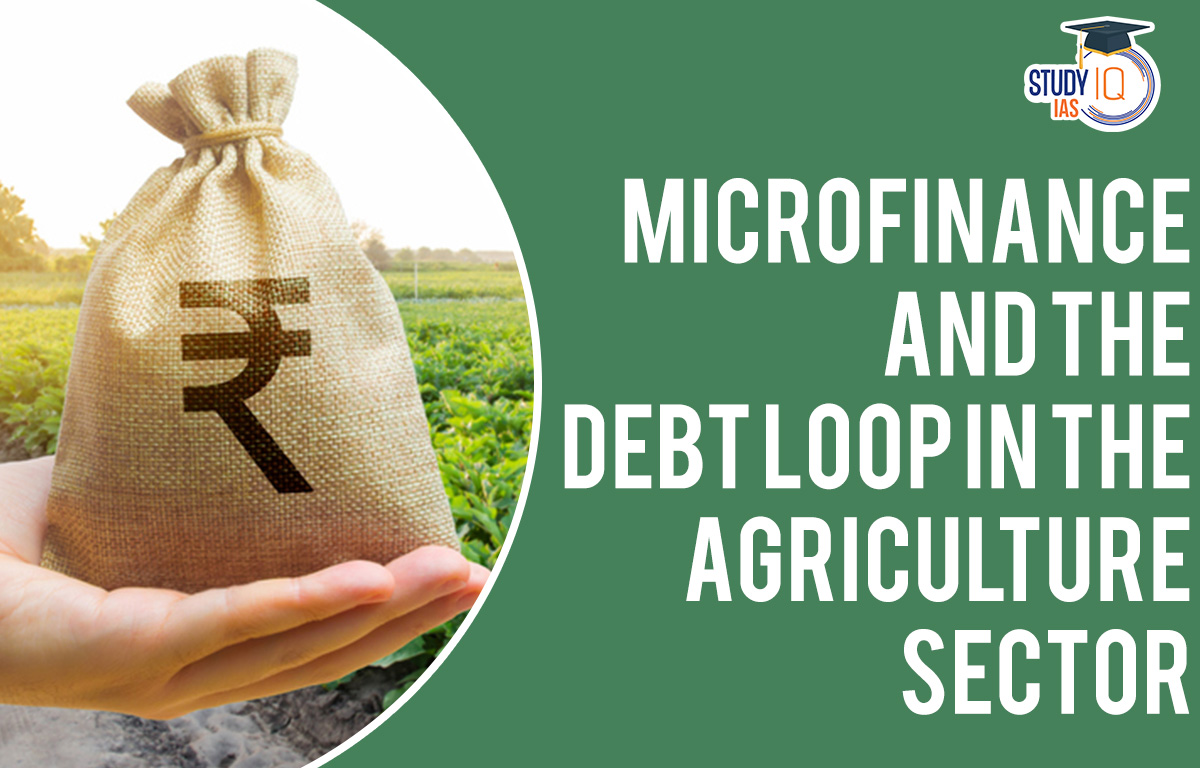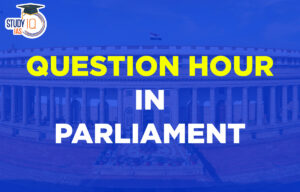Table of Contents
Context: In India’s distressed agricultural setup, irregular weather patterns and easy loans are pushing women into an unending cycle of borrowing.
Background of the Issue
- Microfinance loans, which were initially intended to empower farmers in rural India, have become a source of debt and despair for many farmers. The impact of microfinance loans on agriculture debt in India is a complex issue that requires urgent attention and intervention.
- Due to changing weather patterns and easy access to loans, women farmers are burdened with high-interest rates of up to 30% and coercive repayment tactics.
- The situation has become so dire that in neighbouring Sri Lanka, microfinance loans have caused widespread turmoil and have been linked to many cases of suicide.
What is Microfinance?
- Microfinance, defined by the Reserve Bank of India as collateral-free loans given to low-income households earning up to ₹3,00,000 annually, was meant to create “microentrepreneurs”, according to the World Bank, by helping them access credit for their businesses to grow.
- Simply put microfinance is a form of financial service which provides small loans and other financial services to poor and low-income households
- In India, all loans that are below Rs. 1 lakh can be considered as microloans. According to the Microfinance Institutions Network (MFIN), the number of microfinance loans in Maharashtra rose from 82.89 lakh on March 31, 2021 to 91.66 lakh on March 31, 2022.
- MFIs are financial companies that provide small loans to people who do not have any access to banking facilities.
Types of Microfinance Institutions
- In India, a microfinance loan is defined as a collateral-free loan given to a household having an annual income of up to Rs 3 lakh. (Recently revised by RBI. Earlier it was Rs 1 Lakh)
- Example of MFIs: Bandhan Bank Limited, Ujjivan Small Finance Bank, Annapurna Finance Pvt. Ltd, Muthoot Microfin Limited, Credit Access Grameen Limited, Sonata Finance Private Limited etc.
- Different types of micro financial services providers for underprivileged people
- Non-government organizations (NGOs)
- Cooperatives
- Community-based development institutions like self-help groups and credit unions
- Commercial and state banks
- Insurance and credit card companies
- Telecommunications and wire services
- Post offices and other points of sale – offering new possibilities.
- Some government banks also offer microfinance to the eligible categories of borrowers. Although most microfinance institutions target the eradication of poverty as their primary motive, some of the new entrants are focused on the sale of more products to consumers.
Benefits of Microfinance Institutions
- It makes credit available easily thereby bettering the income and employment scenario.
- It helps in serving the under-financed sections such as women, unemployed people and those with disabilities.
- It helps low-income households to stabilize their income flows and save for future needs.
- In good times, microfinance helps families and small businesses to prosper, and at times of crisis it can help them cope and rebuild.
- Families benefiting from microloans are more likely to provide better and continued education for their children.
- They promote financial inclusion which enables the poor and low-income households to come out of poverty, increase their income levels and improve overall living standards.
- It can facilitate achievement of national policies that target poverty reduction, women empowerment, assistance to vulnerable groups, and improvement in the standards of living.
Debt trap and microfinance: A Debt trap refers to a situation where a borrower becomes unable to repay their debt, leading to a cycle of borrowing to repay existing debt, which results in further indebtedness.
- In the context of microfinance, debt trap can occur when microfinance institutions offer loans to borrowers who cannot afford to repay them, leading to a cycle of debt.
- In India, microfinance institutions have been accused of charging high interest rates and using coercive tactics to collect repayments, leading to debt trap for many borrowers.
- Microfinance institutions often use group lending, where members of a group are jointly responsible for repaying loans, putting pressure on individual borrowers to repay even when they cannot afford to do so.
- Women borrowers are particularly vulnerable to debt trap, as they often have limited income-generating opportunities and face economic shocks such as natural disasters or illness, making it difficult for them to repay loans on time.
- In many cases, men remain debt-free while women are left to shoulder the financial burden. Debt trap can have significant consequences for borrowers, including loss of assets, social stigma, and a decline in their overall well-being.
Challenges associated with by MFIs in India
- Over-dependence of the banking system: banks today have a presence in the microlending space and they are also partnering with MFIs through strategic stakes. MFIs are also finding it difficult to grow independently without any support from anchor investors. There are many MFIs that included NGO-run units and societies. Non-banking finance companies – microfinance institutions (NBFC-MFIs) had also been registered with the Microfinance Institutions Network (MFIN).
- Over-borrowing: The biggest risk looming over the microfinance industry today is the tendency to over-borrow on the part of loan seekers. The fact that 20% to 30% of loan applications are now being rejected by MFIs is attributed to the excess borrowing witnessed in the industry.
- Missing of Targets: Loan Default: Risk management remains inefficient. Plus, late payments are almost 70% in MFIs, which further creates a hurdle for the institution’s working capital and profit. As per RBI regulations, the borrower is also not allowed to approach more than two microfinance institutions for the same. As part of self-regulation, MFIN increased the lending bar to Rs.80,000 as there was a huge demand for loans.
- Easily affected: The small size of these institutions implies that they will be affected by small adverse developments resulting in fragile finances. It is a common mistake by the MFIs to neglect the urban poor; they primarily try to focus on the rural poor.
- Funding: Banks usually have multiple products and an assured deposit structure. On the other hand, micro lending institutions are highly dependent on the market for funding. This means that at the smallest of events affecting business, MFIs could find it difficult to procure financing.
- Limited budgets – Making provisions for large upfront investments is not possible for most of the MFIs which limits their capability to purchase world-class banking solutions that can help them fulfil their requirements and support their growth targets.
- High rates of interest charged by lenders: MFIs have a high rate of interest charged on the loans that amount to 12-30% of the principal amount. This leads to default.
Way Forward
- Strengthening regulations: The government should strengthen regulations to prevent over-borrowing and coercive lending practices. For example, it could mandate that microfinance institutions must disclose interest rates and terms and conditions in local languages, and set a cap on interest rates.
- Promoting financial literacy: The government should promote financial literacy among women borrowers, particularly in rural areas. For example, it could conduct financial literacy campaigns in local languages and establish financial education centers in villages.
- Encouraging alternative sources of credit: The government should encourage the development of alternative sources of credit, such as self-help groups and cooperative societies. For example, it could provide subsidies and other incentives for setting up self-help groups and cooperative societies, and ensure that they have access to low-cost credit.
- Supporting women farmers: The government should provide support to women farmers, who are often the most vulnerable to over-borrowing and debt. For example, it could provide subsidies for agricultural inputs and equipment, and offer training and extension services to women farmers.
- Strengthening social protection measures: The government should strengthen social protection measures to provide a safety net for vulnerable households. For example, it could expand the coverage of the National Rural Employment Guarantee Act (NREGA), which provides employment opportunities and social security to rural households, and increase the amount of the old-age pension.
- Field superintendence – This can keep an eye on the performance of ground employees of MFIs and their loan recovery practices
- Focus on rural poor – Instead of reducing the initial cost at places where there are MFIs, these institutions could start targeting the rural poor and establish new branches over the areas.
- Transparency of interest rates – The MFIs should abide by an actual Interest rate on the products and amounts which should be mentioned to the customers.


 Question Hour in Parliament: Meaning, Ty...
Question Hour in Parliament: Meaning, Ty...
 Daily Quiz 18 July 2025
Daily Quiz 18 July 2025





















